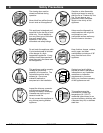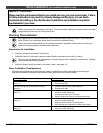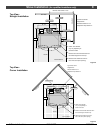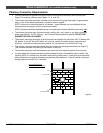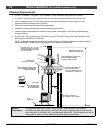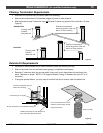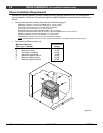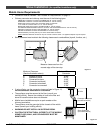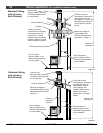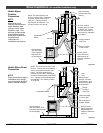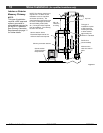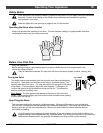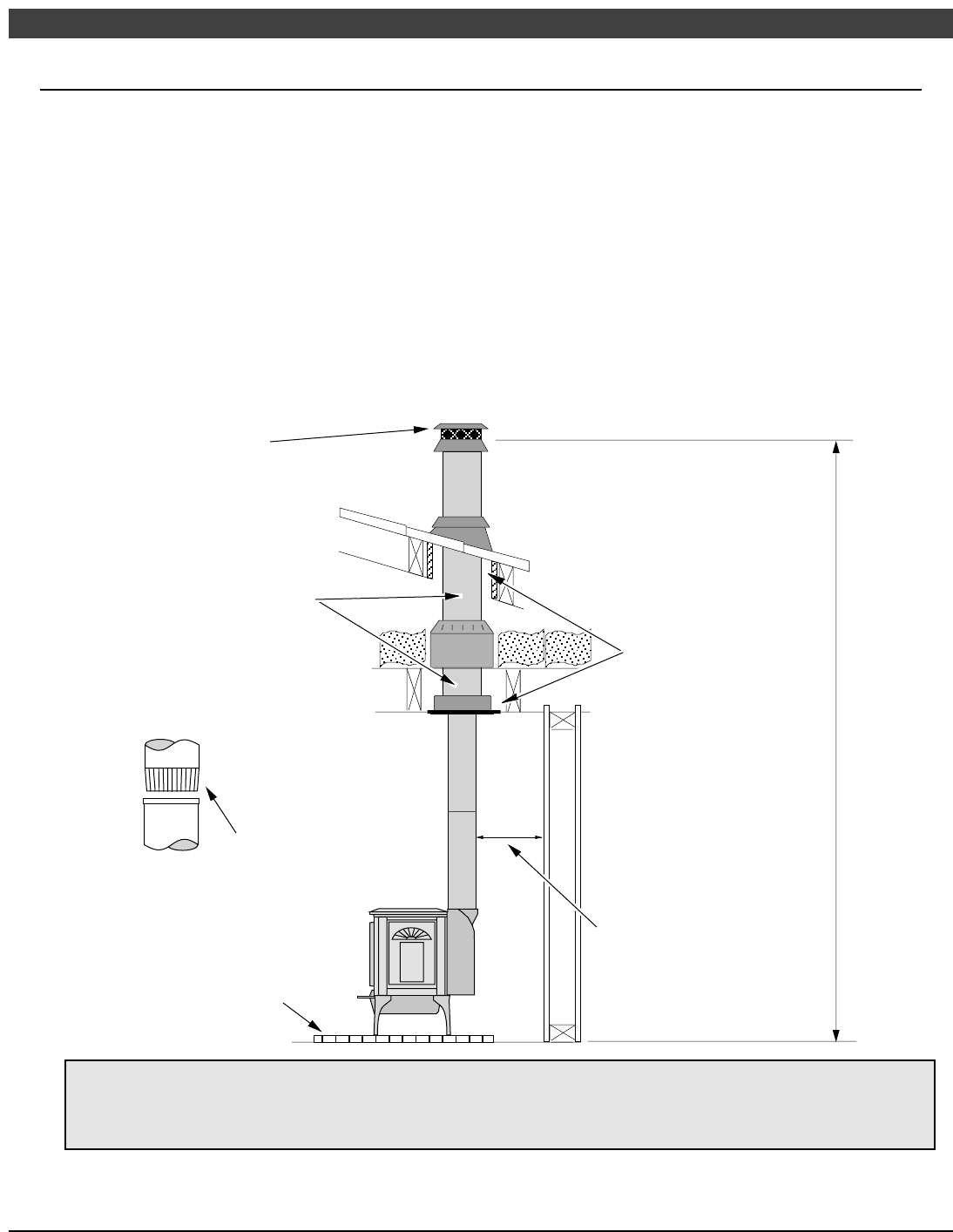
12 Stove Installation (for qualified installers only)
© Travis Industries 100-01177 4060802
Chimney Requirements
• DO NOT CONNECT THIS UNIT TO A CHIMNEY FLUE SERVING ANOTHER APPLIANCE.
• UL 103 HT Chimney must be used from the first ceiling or floor penetration to the chimney cap.
• Use 6" diameter type UL 103 HT chimney from one manufacturer (do not mix brands) or code
approved masonry chimney with a flue liner.
• Chimney must be fastened to each adjoining section.
• Follow the chimney manufacturer's clearances and requirements.
• Use the chimney manufacturer's fire stops, attic guards, roof supports, and flashings when passing
through a ceiling
• No more than 180
o
of elbows (two 90
o
elbows, or two 45
o
& one 90
o
elbow, etc.) may be used for the
entire system (connector and chimney).
NOTE: Additional elbows may be allowed if draft is sufficient. Whenever elbows are used the draft is
adversely affected. Additional chimney height may be required to boost draft.
Chimney Cap
(See the section "Chimney
Termination Requirements"
for more details)
Factory Built
Chimney Sections
Minimum Air Space to
Combustibles (See
Chimney Manufacturer's
Instructions - usually 2")
Floor Penetration Equipment
(Attic Radiation Shield with
Chimney Support)
Roof Penetration Equipment
(Roof Radiation Shield,
Flashing, Storm Collar)
}
}
Floor
Protection
Connector Clearance
(as outlined in this manual)
}
Minimum System 15'
Maximum System 33'
Connector
On singlewall pipe
the crimped end
points downward.
Figure 7
Drafting
Performance
This appliance relies upon natural draft to operate. External forces, such as wind,
barometric pressure, topography, or factors of the home (negative pressure from exhaust
fans, chimneys, air infiltration, etc.), may adversely affect draft. Travis Industries can not be
responsible for external forces leading to less than optimal performance.



